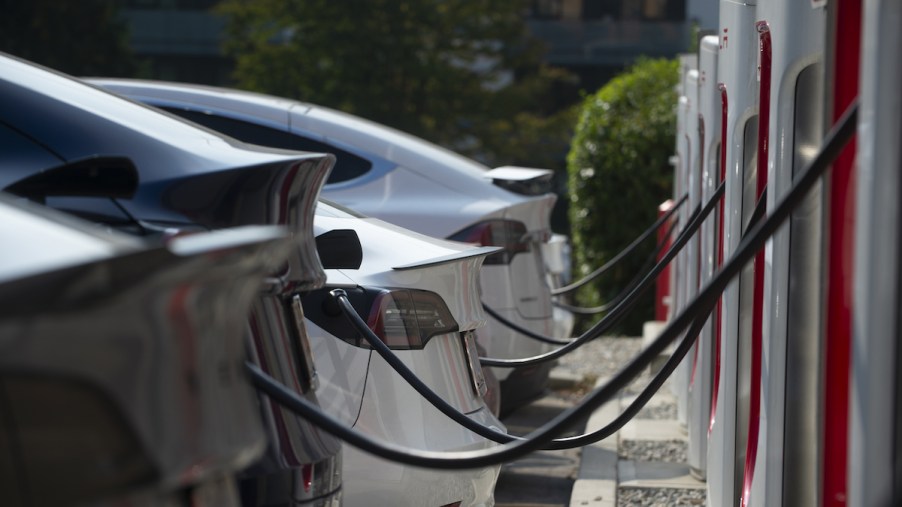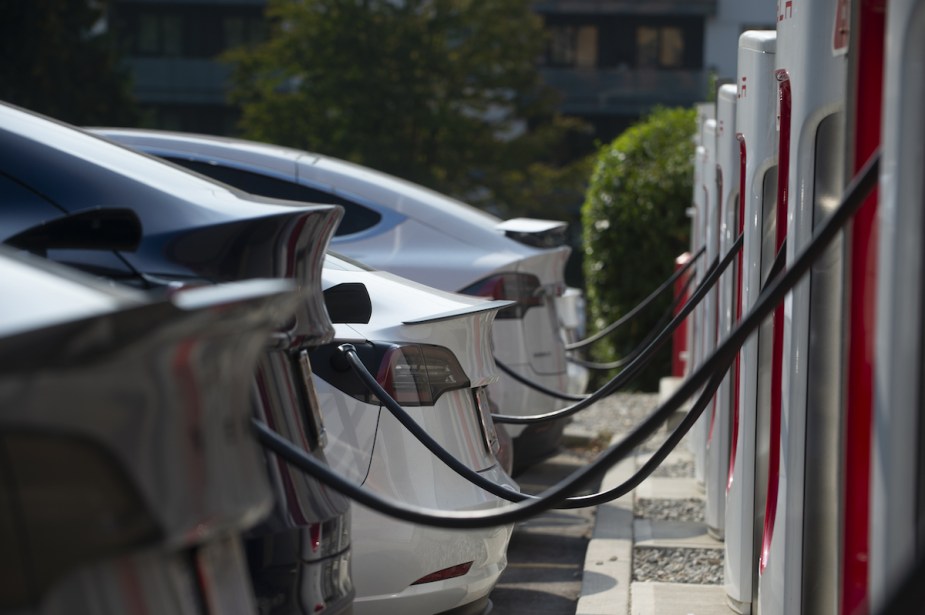
Some EVs Gain Additional Driving Range at Ideal Temperatures
It’s no secret that EVs can lose some driving range when operating in extremely cold or hot weather. What people tend to talk less about is how many EVs also have an ideal temperature range at which they can exceed their estimated driving range. So, how does temperature affect EVs?
Hot and cold weather can affect an electric vehicle’s driving range

An EV’s driving range is connected to its battery life, and few things affect battery life more than temperature, whether it be excessive heat or cold.
When winter strikes, an EV owner should remember that cold can wreak havoc on battery life. Recurrent noted that a temperature of 20 degrees Fahrenheit could reduce an EV’s range by 10% to 12%. That’s mainly because colder weather can slow the chemical and physical processes necessary for batteries to function properly. According to Axios, using the car’s heat in cold weather can also reduce EV range by up to 40%.
Then there’s the question of hot weather, which can also have a negative impact on range, depending on the circumstances. EV Solutions writes, for example, that driving in 95 degrees Fahrenheit temps with the air conditioning on can reduce EV range by 17%.
Some electric cars exceed their expected driving range in warm weather
These numbers may seem discouraging, but there’s also a more positive flip side to weather’s impact on an EV. In a sort of “Goldilocks” scenario, some electric cars can also exceed their estimated driving range in temperatures that are warm but not excessively so.
Drive Electric Vermont makes this phenomenon clear in their graph, which shows that between temperatures of around 50 degrees Fahrenheit and 85 degrees Fahrenheit, some cars can achieve greater than 100% of their range. Axios breaks down which cars do the best in this area: notable standouts include the Nissan Leaf, which can reach 105%, the Volkswagen e-Golf at 111%, and the Hyundai Kona Electric at 112 degrees Fahrenheit.
The Tesla Model X and Chevy Bolt can’t handle extreme temperatures
Not all EVs are bad at handling extreme temperatures. Some see minimal dips in range in the heat or cold. But others seem to be significantly affected by very hot or cold weather.
Regarding hot weather, the Tesla Model X performs poorly relative to its peers, as Axios’s graph makes clear. In above-average temperatures, its range goes down to 93%. Interestingly, that’s the same percentage by which its range is reduced in cold weather.
While having your Model X’s range go down to 93% isn’t ideal, that’s nothing compared to what can happen to some cars when the cold weather hits, and many EVs end up with ranges close to 40% below what would be expected. Taking the prize for worst performance in cold weather is the Chevy Bolt, whose range drops to 66% of the EPA estimate when temperatures plummet.
Suffice it to say that if you’re an EV owner, you’ll have one more reason to keep an eye on the weather forecast, especially if you’re planning a trip. The last thing you want is for the weather to leave you stranded because you failed to account for a potential hit to your EV’s expected range. If you see especially hot or cold temperatures in your future, make sure you know where the charging stations on your route are, just in case.


